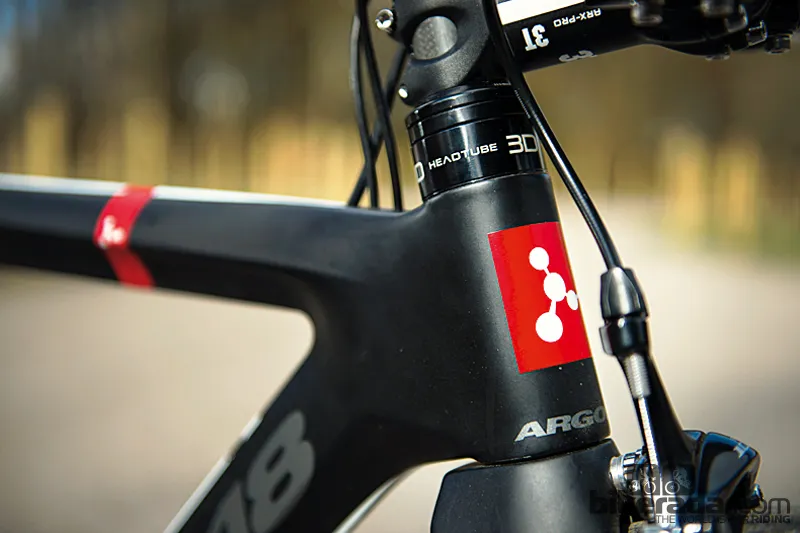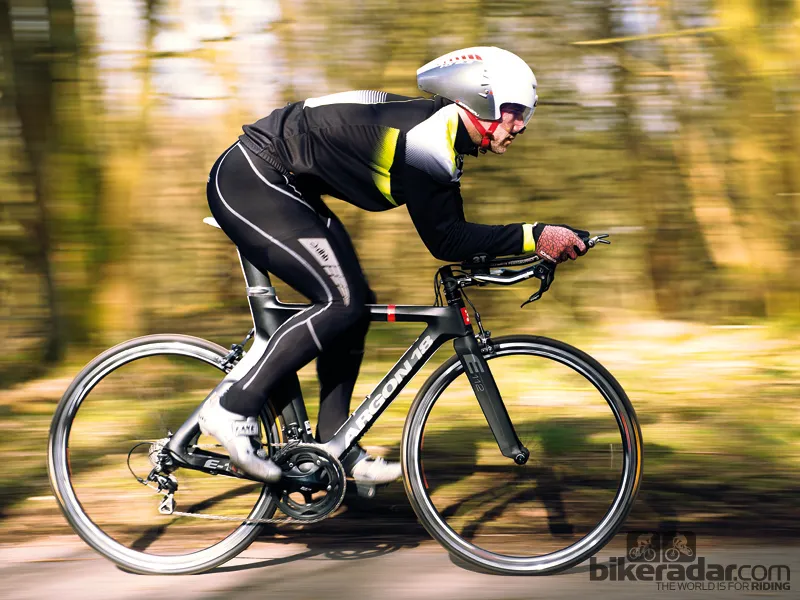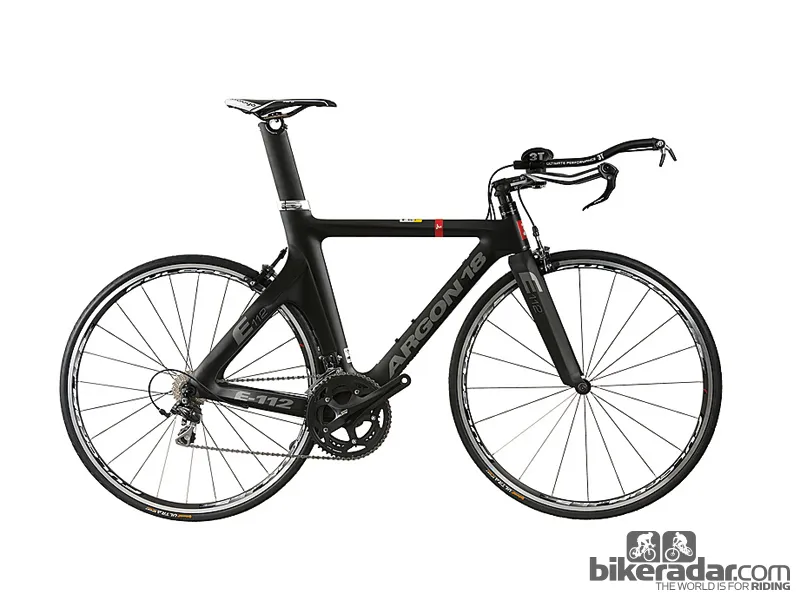The entry level Argon 18 E-80 really impressed us, but does moving a step up the ladder to the race-proven E-112 get you an even more cost-effective, upgrade-ready ride?
Ride & handling: Naturally fast and clean with great position
The Argon isn’t in any way slow. As soon as the road opened up and we applied some power, the E-112 produced a really clean, crisp feel. That created a far more positive, encouraging response and significantly faster results than with woolier/softer feeling bikes.
There was no obvious plateau or deflection point in the speed curve, either, with the Argon continuing to accelerate with convincing ease right up to the point where we ran out of legs. It’s also light and powerful enough to handle climbs reasonably well if it has to.
Taking into account the conventional Fulcrum Racing Quattro wheels, the speed sustain is also very impressive, bowling us along as though we could actually feel the aerodynamics slicing through the wind more effectively. A lot of this efficiency is due to the fit of the AFS triathlon/time trial geometry.
On paper our riding position was pretty aggressive, but it never felt as though we were compromising comfort to gain drag coefficient on the road. While we were expecting a serious kicking from the massive stays, Argon’s HDS (Horizontal Dual System) optimisation makes life in the slimline saddle pretty good, even on high-mileage or rough road sessions, and the 3T bar is also a friendly place to lay your forearms.

The 3D headset raising system extends the head tube upwards
There’s no trace of any softness in the handling, though, with clarity from the lower half of the frame giving plenty of traction feedback. It’s still more than surefooted enough to keep the poised and clean character alive through corners as well as under power, and the brakes are reassuring allies on steep descents, even with the ultra-narrow bladed levers.
While the deep frame tubes can gust a bit in sidewinds, it’s perfectly happy coping with deep-section wheels at all speeds, which confirms its excellent potential for upgrading at a later date.
Frame & equipment: Expensive spec but the skeleton is worth it
If the frame looks familiar, it’s because the E-112 uses the same mould as Argon 18’s 2010/11 flagship bike, the E-114. The major difference is that, rather than the ONEness bayonet fork of the 114, the 112 uses a conventional single steerer fork with front mounted brake.
However, Argon 18 have added their own edge to conventional in the shape of the oversized 3D System headset extenders. These screw into the head tube to raise the level of the upper bearing, and Argon claim they increase fork and stem stiffness by up to 11 percent compared with normal skinny spacers in the maximum 25mm rise setup.
Internal cable routing also disappears into three ports behind the stem. There’s no shortage of stiffness in the main frame, with geometric aero profiles extending back to the deep, wheel-hugging cutout seat tube without any trace of tapering.

The ovoid aero seatpost can be reversed for 76/78-degree effective seat angles
The screw-in bottom bracket is topped with a deep web across the base, and the seat tube extends relatively high above the top tube, with a rear clamp bolting into bullet-shaped blisters on the seat clamp. The seatpost is also reversible to give either a 76- or a 78-degree seat angle, and the rear brake is conventionally mounted above the wheel.
Curved triangular-section chainstays stay the same depth all the way to the replaceable alloy horizontal dropouts, which allow adjustment of the wheel position in relation to the frame.
The faceted aero seatstays are particularly interesting, mainly because of their sheer depth, which would shame most chainstays. Despite the brutally stiff looks, Argon 18 use their HDS to deliberately split the carbon layup in half along a nominal line from the rear dropout to the top of the head tube. Below the line it’s all about torque transfer and impressive power delivery, and above it is deliberately laid up to be more forgiving and compliant.
As you might expect for a bike tagged as a 105 version, our test bike had a full set of Shimano controls with Dura-Ace tip shifters. The 53/39 chainrings are totally appropriate for a naturally fast bike, but the slotted front mech mount can take compact rings too.
Smaller bikes (XS/S/M) also get shorter 172.5mm cranks. The 3T stem is size-specific, and the 3T Aura Pro bar is particularly flat and aero, with a naturally comfortable curve to both extensions and cow horns.
The Fulcrum Racing Quattro is one of our favourite mid-price wheelsets but the frame is definitely crying out for something deeper and more aero when you can afford to upgrade. That eats into the value of a relatively expensive package, but the frame is certainly a really sound investment.
This article was originally published in Triathlon Plus magazine, available on Zinio.



